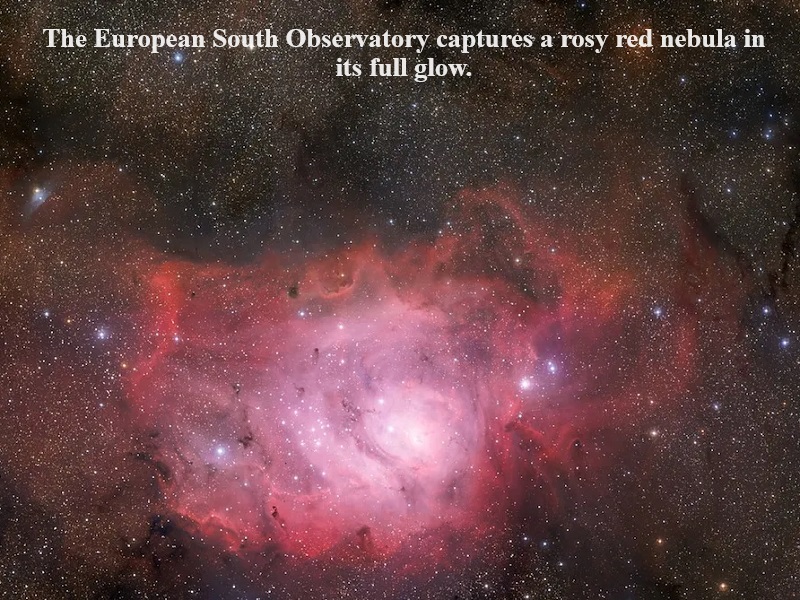
The European Southern Observatory (ESO) has captured a vibrant red nebula, as shown in its latest photograph.
This large cloud of gas and dust, known as IC1284, is an emission nebula, a type of diffuse, luminous cloud of ionized gas that emits its own light.
The central part of the image captures the emission nebula, which appears red due to the active star formation and the fusion of hydrogen occurring in the region.
ESO officials explained that the nebula’s rosy glow is the result of electrons within hydrogen atoms becoming excited by radiation from young stars. Subsequently, these electrons lose energy and emit light of a specific color or wavelength.
Astronomers used ESO’s wide-field camera, OmegaCAM, on the VLT Survey Telescope (VST) at the Paranal Observatory in Chile to photograph IC1284. Nebulae consist of vast clouds of gas and dust, which often lead to the birth of new stars.
In the latest image shared by ESO, the nebula’s warm red hue is adorned with bright, twinkling stars. Additionally, two blue reflection nebulae, known as NGC6589 and NGC6590, accompany IC1284 in the lower right corner of the new VST image.
Contrasting with emission nebulae, interstellar dust clouds within nebulae reflect light emitted by nearby stars or stars themselves, resulting in a distinctive blue color.

Post Your Comments